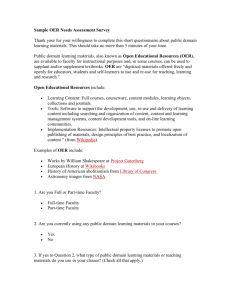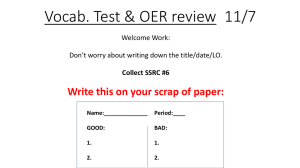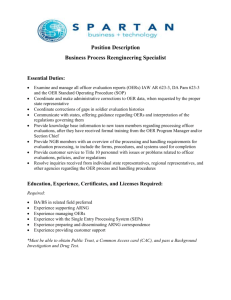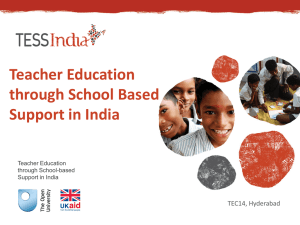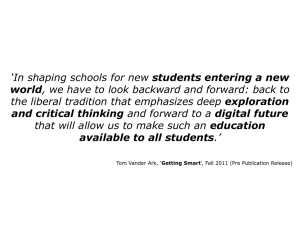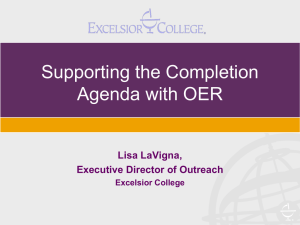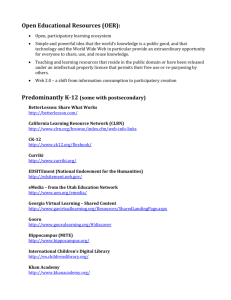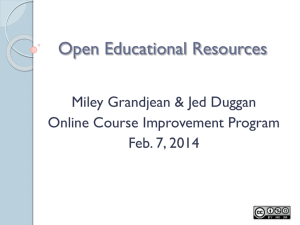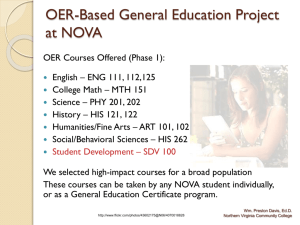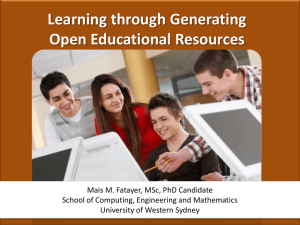the Emergence of Open Educational Resources
advertisement
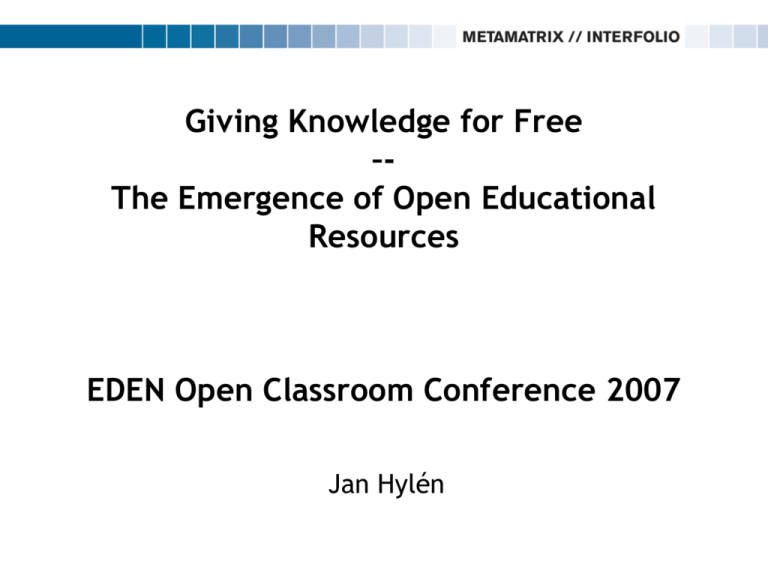
Giving Knowledge for Free –The Emergence of Open Educational Resources EDEN Open Classroom Conference 2007 Jan Hylén Trends in Higher Education • Growing competition – knowledge and learning resources are often considered as key intellectual property • Still institutions and individuals are sharing their digital learning resources over the Internet openly and for free • OECD/CERI study: – why this is happening? – who is involved? – what the implications of this? A new culture of openness in HE? • Open Source Software, Open Access, Open Educational Resources • Free availability over the Internet • As few restrictions as possible on the use of the resource: – No technical barriers (disclosed source code) – No price barriers (no subscriptions, license fees) – As few legal barriers as possible (open licenses) OECD/CERI Study: main objectives • Analyse and map scale and scope of OER initiatives in OECD countries • Conceptual analyses • 4 main issues: – IPR issues – How to develop sustainable cost/benefit models? – Incentives and barriers to produce, use and deliver materials? – How to improve access and usefulness? • Policy implications Mapping the OER movement (1) • It is a global movement • Growing number of initiatives, resources and users – but impossible to give accurate numbers • In order to ensure easy access most providers have no registration – consequently: poor user data • So far most sites and resources are in English Mapping the OER movement (2) • Started as a grass roots movement but now growing institutional involvement • All kinds of institutions are involved: big/small; campus based/distance teaching; private/public • Some institutions are not involved out of fear for misuse and unethical competition OER Providers Big MIT OCW OpenLearn MERLOT Wikipedia Connexions Institution Community Common Content ParisTech Open Course Univ. of the Western Cape Small The use of OER in teaching • Often a supplement used for its flexibility and quality • Mostly smaller chunks of learning materials • Lack of time, skills and reward system are reasons for people not to use OER Use of OER in learning • According to MIT and Tufts, users of OCW are typically: – well educated (with bachelors or masters degree) – self-learners (MIT 47%, Tufts 43%) – from North America (although 57% were non-US visits) • John Hopkins OCW also reports large numbers of professionals and self-learners Motivations for producing and sharing open educational resources Governments Institutions Individuals Expanded access to learning Altruistic reasons Altruistic or community supportive reasons Bridge the gap between nonformal, informal and formal learning Leverage on taxpayers’ money by allowing free sharing and reuse between institutions Personal non-monetary gain Promote lifelong learning “What you give, you receive back improved” Commercial reasons Good PR and show-window attracting new students It is not worth the effort to keep the resource closed Growing competition – new cost recovery models are needed Stimulate internal improvement, innovation and reuse Underlying Drivers and Inhibitors of technical, economic, social and legal nature Main Challenges for the OER movement • Quality and relevance of resources • Intellectual Property Rights • Sustainability – more than economics, but important to find a good revenue model Quality and relevance • Traditional academic processes combined with web technology • The concept of quality is somewhat different – more related to the use and the situation, less to the product itself • More emphasis on the process than the product – ”prosumers” Coproducer LabSpace OpenCourse Institution OCW projects Community MERLOT Producer/ consumer IPR issues • Three (or four) main problems – Too strong copyright regime (or too rigid interpretation) hinders the use of ICT in education – Practical difficulties: obtaining rights to use content is very time consuming and expensive – Awareness about copyright and open licenses too low among academic staff – What is “commercial” and “non-commercial” use of OER? Policy implications on national level • A way to promote lifelong learning, wider participation in higher education and bridge gap between informal and formal learning • A need for a holistic approach to digital learning resources – both open and commercial • Review existing copyright regime • Open publication of publicly funded resources Policy implications on institutional level • Increased competition and comparison among HEI of courses, syllabuses, reading lists etc. • Increased interest for validation of informal knowledge – More assessment, less teaching – Competition from private assessment institutes? • There is a risk in doing nothing – IT strategy including OA and OER – Incentives for faculty members to use and produce OER – Training and support for development and use of OER and particular copyright issues The report is available for free on: www.oecd.org/edu/oer Thank you for your attention! jan.hylen@metamatrix.se
